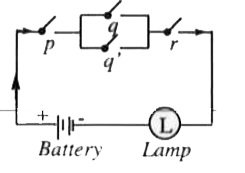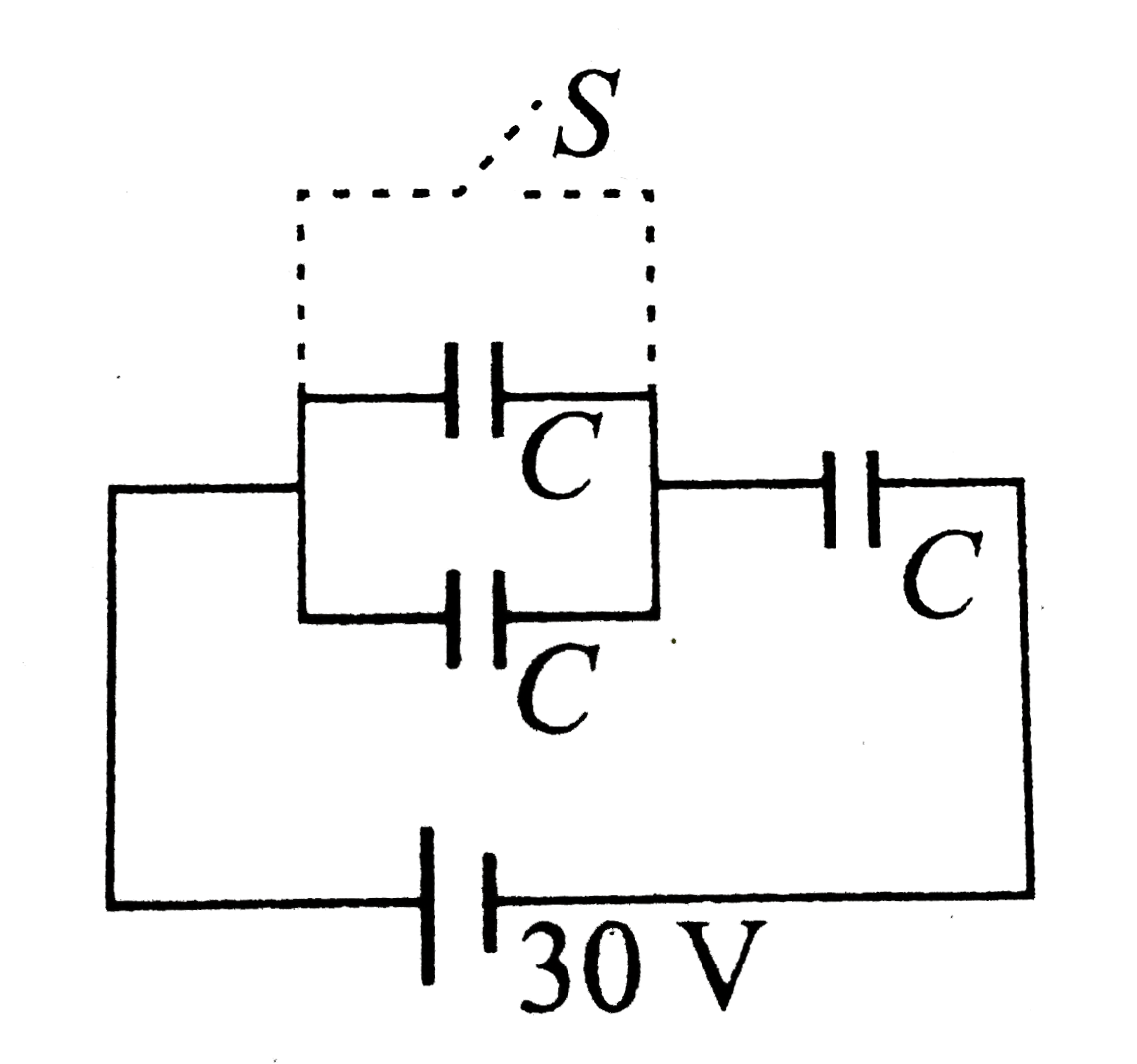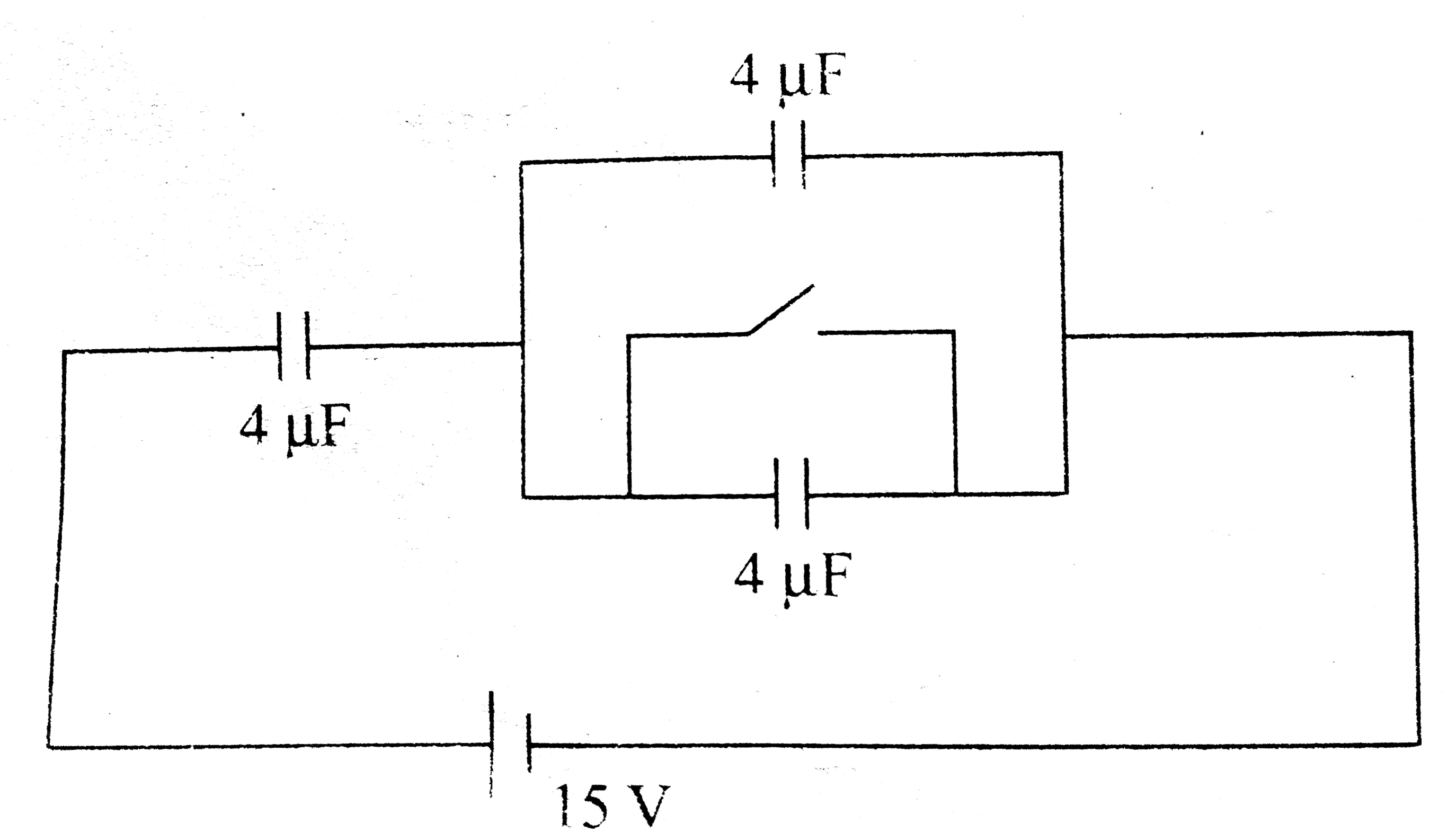If a component in one of the paths does not work, charges continue to flow through the other path in a...................(parallel/series) circuit
To solve the question, we need to understand the difference between parallel and series circuits and how they behave when one component fails.
1. Understanding Circuit Types:
- A series circuit is a circuit where components are connected end-to-end, so there is only one path for current to flow. If one component fails (like a bulb burning out), the entire circuit is broken, and current stops flowing.
- A parallel circuit, on the other hand, has multiple paths for current to flow. If one component fails, current can still flow through the other paths.
2. Analyzing the Given Situation:
- The question states that if a component in one of the paths does not work, we need to determine whether charges continue to flow through the other path.
3. Applying the Concepts:
- In a parallel circuit, if one component fails, the other paths remain functional, allowing current to continue flowing.
- In a series circuit, if one component fails, the entire circuit is interrupted, and no current flows.
4. Conclusion:
- Since the question specifies that charges continue to flow through the other path when one component does not work, this scenario describes a parallel circuit.
Final Answer:
Charges continue to flow through the other path in a parallel circuit.
---
- A series circuit is a circuit where components are connected end-to-end, so there is only one path for current to flow. If one component fails (like a bulb burning out), the entire circuit is broken, and current stops flowing.
- A parallel circuit, on the other hand, has multiple paths for current to flow. If one component fails, current can still flow through the other paths.
- The question states that if a component in one of the paths does not work, we need to determine whether charges continue to flow through the other path.
- In a parallel circuit, if one component fails, the other paths remain functional, allowing current to continue flowing.
- In a series circuit, if one component fails, the entire circuit is interrupted, and no current flows.
- Since the question specifies that charges continue to flow through the other path when one component does not work, this scenario describes a parallel circuit.
Charges continue to flow through the other path in a parallel circuit.
Topper's Solved these Questions
- ELECTRICITY AND MAGNETISM BOOK - ICSECHAPTER - ELECTRICITY AND MAGNETISM EXERCISE - EXERCISE (SECTION I) (Distinguish between)
8 Videos
- ELECTRICITY AND MAGNETISM BOOK - ICSECHAPTER - ELECTRICITY AND MAGNETISM EXERCISE - EXERCISE (SECTION I) (Short Answer Questions)
8 Videos
- ELECTRICITY AND MAGNETISM BOOK - ICSECHAPTER - ELECTRICITY AND MAGNETISM EXERCISE - EXERCISE (SECTION I) (Write T for True and F for False. Correct the false statements)
6 Videos
- ENERGYBOOK - ICSECHAPTER - ENERGYEXERCISE - EXERCISE (PICTURE STUDY)
3 Videos
Similar Questions
When does the current flow through the following circuit ?

View SolutionThree capacitors each having capacitance C=2μF are connected with a battery of emf30V as shown in. when the switch S is closed, find
a. the amount of charge flowing through the battery ,
b. the heat generated in the circuit,
c. the energy supplied by the battery,
d. the amount of charge flowing through the switch S.
 .
.
View SolutionThe path which the blood flows through during pulmonary circulation is :
View SolutionConsider the circuit shown in figure, after switch S is closed.

What amount of charge will flow through the switch?
View SolutionA grassy plot is 80 m ×60 m. two cross paths each 4 m wide are constructed at right angles through the centre of the field, such that each path is parallel to one of the sides of the rectangles. Find the total area used path. Also, find the cost of gravelling them at Rs. 5 per square metre.
View SolutionWhen a cell is conneted in a circuit, a current 11 flows in the circuit. When one more identical cell is conneted in series with the first one, a crrent I2 is found to flow in the circuit. When same cell is connected in parallel with the first one, the current is found to be I3. Show that 3I2I3=2I1(I2+I3).
View SolutionWhen an AC source is connected to a capacitor there is a steady-state current in the circuit. Does it mean that the charges jump from one plate to the other to complete the circuit?
View SolutionTwo parallel wires in the plane of the paper are distance X0 apart. A point charge is moving with speed u between the wires in the same plane at a distance X1 from one of the wires. When the wires carry current of magnitude I in the same direction, the radius of curvature of the path of the point charge is R1 In contrast, if the currents I in the two wires have directions opposite to each other, the radius of curvature of the path is R2. If X0X1=3, the value of R1R2 is
View SolutionA current of 0.5A is drawn by a filament of an electric bulb for 10 minutes. Find the amount of electric charge that flows through the electric circuit.
View SolutionA constant current exists in an inductor coil connected to a battery. The coil is short circuited and the battery is removed. Show that the charge flown through the coil after the short circuiting is the same as that which flows in one time constant before the short circuiting.
View Solution
